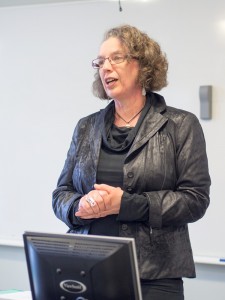Here is the abstract of the talk to be given by Dr. Annina Seiler and Dr. Heather Pagan at our Annual Meeting in 2024 (see the Events page for more details).
Translanguaging in the 13th Century:
John of Garland’s Dictionarius in Brugge, Public Library, MS 536
Heather Pagan, University of Westminster, Annina Seiler, University of Zurich, Christine Wallis, University of Sheffield/ University of Manchester
John of Garland’s Dictionarius, a thirteenth-century Latin lexicographic work, survives in at least 33 manuscript copies disseminated across England and the Continent. Originally conceived as a tool for teaching Latin through the medium of French, later copies of the work circulating in England, northern France and the Low Countries attracted glosses in Middle English, Old French, and other languages, offering insights into the process of language teaching as well as textual communities for language learning. The text guides the student on a walk throughout Paris, visiting numerous shops and other locations as a pretext for providing a range of everyday vocabulary to the learner. Each section is further complemented by a commentary, providing additional grammatical information as well as translations of key terms into French. One thirteenth century copy, Brugge, Public Library, MS 536, eliminates the commentary in favour of a different strategy. This manuscript offers a text with all commentary excised, in favour of providing extensive interlinear glosses in Latin, Middle French and Middle English. The manuscript, produced for an English audience, provides a unique snapshot of medieval language learning and language contact. Based on an analysis of the functions of glosses in different languages, we argue that translanguaging is a key didactic strategy employed by Garland and, in particular, in the copy transmitted in Brugge MS 536.



